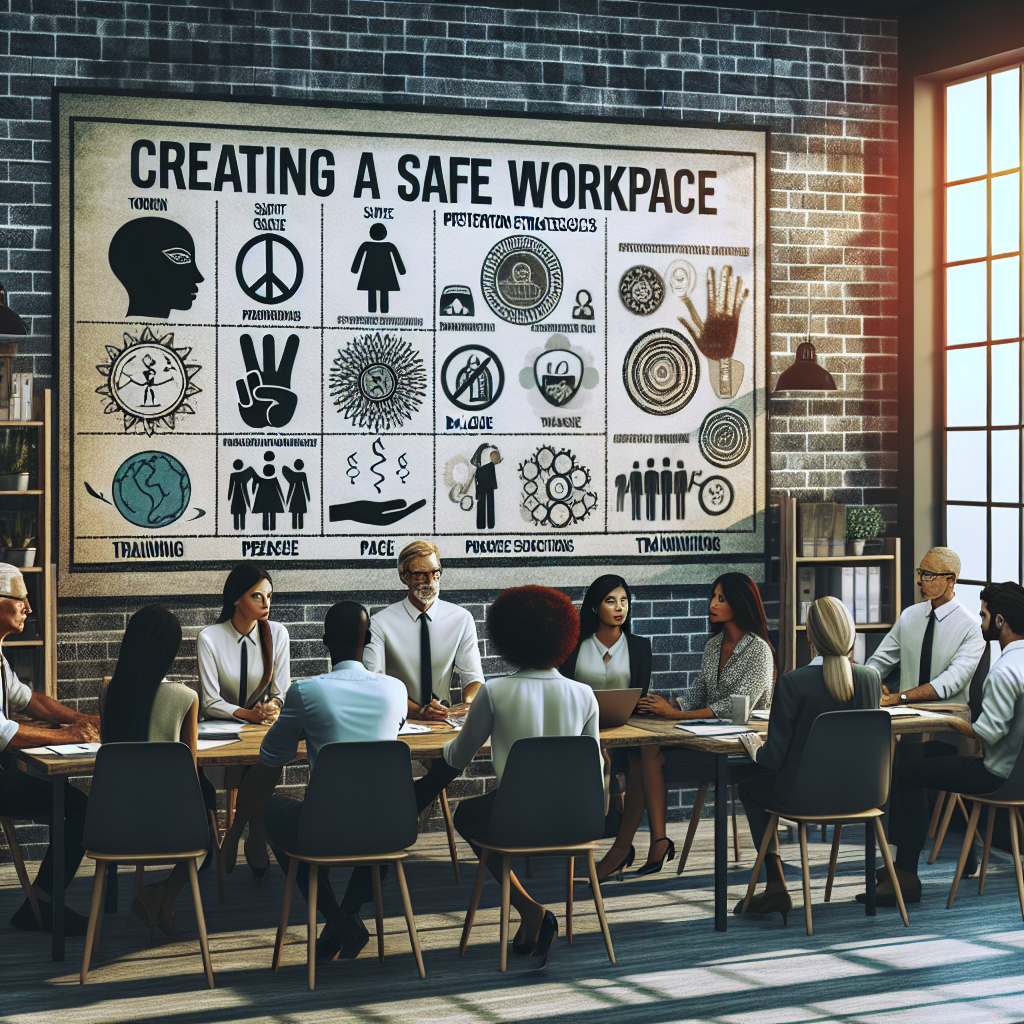
Introduction
In today’s fast-paced work environment, ensuring the safety and well-being of employees is more critical than ever. Creating a Safe Workspace: How to Recognize and Address Workplace Violence is not just a matter of compliance; it’s a foundational element that fosters a positive workplace culture and enhances productivity. Workplace violence can manifest in various forms, from verbal threats to physical altercations, and it’s essential for organizations to recognize and address these issues proactively.
Statistics reveal a disturbing trend: approximately 2 million Americans report being victims of workplace violence each year. With such alarming figures, businesses must prioritize creating secure environments. In this article, we will explore various aspects of workplace violence, providing actionable insights and strategies to cultivate a safe workspace.
Understanding Workplace Violence
What Constitutes Workplace Violence?
Workplace violence encompasses a range of behaviors, including:
- Verbal Abuse: Insults, threats, or harassment.
- Physical Assault: Hitting, pushing, or other forms of physical aggression.
- Psychological Threats: Stalking, intimidation, or bullying.
- Property Damage: Vandalism or sabotage.
Recognizing these behaviors is the first step in Creating a Safe Workspace: How to Recognize and Address Workplace Violence.
Case Study: The Impact of Workplace Violence
Consider the case of a medium-sized tech company where a disgruntled employee engaged in harassment against team members. This toxic environment led to decreased morale, high employee turnover, and ultimately, a drop in productivity. By failing to address the situation early on, the company faced severe reputational damage and financial loss. This incident highlights the importance of recognizing and addressing workplace violence before it escalates.
Signs of Potential Workplace Violence
Behavioral Indicators
Recognizing the signs of potential violence can be life-saving. Here are some common behavioral indicators:
- Increased aggression or hostility.
- Withdrawal from coworkers or social activities.
- Dramatic changes in mood or behavior.
- Substance abuse or erratic behavior.
Environmental Factors
Physical environments also play a role in workplace violence. Factors to consider include:
- Poor lighting in parking areas or common spaces.
- Lack of security systems or emergency protocols.
- An open office layout that fails to provide privacy.
Understanding these indicators contributes significantly to Creating a Safe Workspace: How to Recognize and Address Workplace Violence.
Strategies for Prevention
Establishing a Zero-Tolerance Policy
Creating a robust zero-tolerance policy for workplace violence is essential. This policy should outline expected behavior, reporting procedures, and consequences for violations. Training employees on this policy ensures that everyone understands their role in maintaining a safe workplace.
Training and Awareness Programs
Regular training sessions focused on recognizing and responding to workplace violence can transform a workplace culture. Employee seminars that cover conflict resolution, communication skills, and stress management foster a proactive approach to safety.
Table: Training Program Components
| Program Component | Description |
|---|---|
| Conflict Resolution | Techniques for resolving disputes peacefully |
| Stress Management | Strategies to handle workplace pressure |
| Reporting Procedures | Clear guidelines on how to report incidents |
Engaging Management and HR
Leadership should prioritize creating a safe workspace. Involving management in safety initiatives ensures that policies have buy-in and support. Encourage HR to keep lines of communication open, providing a confidential platform for employees to voice concerns.
Responding to Incidents
Immediate Actions
When an incident occurs, immediate action is crucial:
- Ensure Safety: Prioritize the safety of all employees; evacuate if necessary.
- Report the Incident: Document the event and report it to the relevant authorities.
- Support Affected Employees: Provide emotional support and counseling if needed.
Case Study: Effective Incident Response
In one notable case, a manufacturing company experienced a violent altercation on-site. The immediate response involved a lockdown and immediate medical assistance for those injured. The company had previously trained employees on emergency procedures, which contributed to a swift, organized response. Post-incident, management conducted follow-up meetings to address the concerns and trauma experienced by employees, demonstrating a commitment to Creating a Safe Workspace: How to Recognize and Address Workplace Violence.
Building a Culture of Safety
Open Communication
Fostering an environment where employees feel comfortable discussing safety concerns is key. Regular meetings can provide a platform for employees to voice issues or suggestions regarding workplace safety.
Encouraging Reporting
Implementing anonymous reporting systems allows employees to report incidents without fear of retribution. Regularly review these reports to identify potential patterns and address issues proactively.
Case Study: Transforming Company Culture
A retail company transformed its culture by encouraging open communication about workplace safety. They instituted regular safety meetings that invited feedback and suggestions. Over time, they saw a marked decrease in reported issues of harassment and confrontation, illustrating the impact of prioritizing a safe workspace.
Conclusion
Creating a Safe Workspace: How to Recognize and Address Workplace Violence is an ongoing commitment that requires diligence, awareness, and leadership. By recognizing the signs of potential violence, implementing preventative measures, and fostering a culture of safety, organizations can significantly mitigate risks and promote a healthy work environment.
In conclusion, prioritize safety in your workplace today. Empower employees, invest in training, and make safety an integral component of your organizational culture. Together, we can create workspaces where everyone feels valued and secured.
FAQs
1. What is considered workplace violence?
Workplace violence includes any act or threat of physical violence, harassment, intimidation, or other disruptive behavior that occurs at the workplace.
2. How can I report workplace violence?
Most organizations have a specific policy for reporting workplace violence. Consult your HR department or check your employee handbook for the reporting procedures.
3. What should I do if I witness workplace violence?
If you witness workplace violence, ensure your own safety first. Then, report the incident to your supervisor or HR department as soon as possible.
4. Are there legal consequences for workplace violence?
Yes, workplace violence can lead to legal ramifications for individuals and organizations, including civil lawsuits, fines, and criminal charges depending on the severity of the incident.
5. How do I support an employee who has experienced workplace violence?
Provide emotional support and encourage them to seek professional help if needed. Ensure they know about reporting procedures and available resources from your organization.
Creating a safe workspace is an essential endeavor that extends beyond mere compliance. By recognizing and addressing workplace violence actively, organizations can cultivate environments that not only protect employees but also enhance overall morale and productivity. Join the movement towards workplace safety today!















